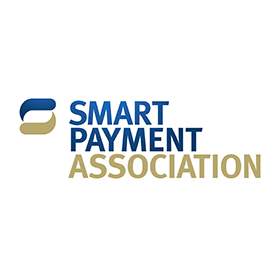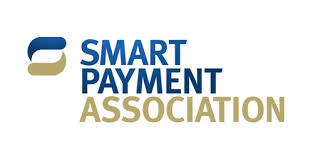
 Requirement for Visual and electronic identification of the card type
Requirement for Visual and electronic identification of the card type
Commonly known as the “MIF Regulation”, EU Regulation 2015/751 – on Interchange Fees for Card-Based Payment Transactions – will be significant for the payment industry for many reasons. The most visible part of the regulation, as suggested by its name, is the interchange fee caps that came into force in December 2015. However, in 2016, the MIF Regulation also abolishes the “honor all card” rule. Which leads us to the much less known, but vitally important, article 10.
Article 10 and in particular clause 5 stipulates that “Issuers shall ensure that their payment instruments are electronically identifiable and, in the case of newly issued card-based payment instruments, also visibly identifiable, enabling payees and payers to unequivocally identify which brands and categories of prepaid cards, debit cards, credit cards or commercial cards are chosen by the payer”.
As it is often the case with such regulations, the regulator sets the rules and underlines the principle and expected behavior. It does not however specify how the rule shall be practically applied. In other words, there are no explicit guidelines or specifications available on how to implement this clause of the regulation. It is therefore left to the various stakeholders to find appropriate “recipes”.
This creates a range of issues in what promises to be a complex implementation:
 1. Language. In the SEPA area, several different languages and alphabets (Roman, Cyrillic, Greek…) are used. This raises the question of whether issuers and merchants will be limited in their choices. Will they align solutions to English or be able to display the card category (debit, credit…) in their own language/alphabet? The issues are clear: a Spanish merchant, for example, will need to understand and check the information written on a Greek or Bulgarian card presented to them.
1. Language. In the SEPA area, several different languages and alphabets (Roman, Cyrillic, Greek…) are used. This raises the question of whether issuers and merchants will be limited in their choices. Will they align solutions to English or be able to display the card category (debit, credit…) in their own language/alphabet? The issues are clear: a Spanish merchant, for example, will need to understand and check the information written on a Greek or Bulgarian card presented to them.
2. Position of the card type. The Regulator does not specify any level of standardization as to the position of the card type icon or identifier (debit, credit…) on the card. However, this is necessary to avoid merchants having to search for the card type (only to find it written in a different and possibly unknown language).
3. Technical complexity. What is on the card must also be in the chip, and so must appear on the POS terminal screen. This will potentially create a level of additional complexity from an electrical personalization point of view. And, of course, the language issue is still present with options displayed in local language potentially not understandable to merchants in other territories.
4. Impact on contactless transactions. The regulation also puts an end to by-default application selection. All options on and in the card will be provided to both the cardholder and merchant to choose from. While choice can be managed for contact transactions through application selection using the POS terminal keyboard and screen, this creates significant barriers to a contactless transaction – and could potentially kill contactless card payments entirely.
The main benefits of contactless payments are, of course, speed and convenience. Customers simply tap their card and go without having to enter a PIN. Should cardholders now be required to tap to reveal the various options (debit, credit…), select the preferred choice, and tap again to finalize the transaction, this will eliminate both the speed and convenience benefits of the payment – jeopardizing the future of contactless. This is inadvisable at a time when contactless payment has been enthusiastically and widely adopted in many European countries, and would threaten both merchant and cardholder interests. Contactless payment must therefore be addressed specifically by the implementation of this regulation.
5. Choice and override. The spirit of the MIF Regulation is to provide a fully-transparent card transaction and, through the end of the ‘honor all cards’ rule, to enable merchants to better inform customers about what they accept and under which conditions. However, when selecting the payment option, it will be the cardholder who will ultimately have the final choice. This creates another potential issue. A merchant that prefers its customers to pay using a debit application would likely indicate the same through pre-selection of the debit option on the terminal. However, should the customer prefer to pay via a credit card application, they would be granted the opportunity to override the merchant’s pre-selection. This requires significant POS software modification and dissemination, not to mention very clear education for merchants and cardholders.
6. Unattended terminals. The end of by-default application choice as discussed above raises critical questions for many unattended terminals, including parking meters and road tolls, that do not offer the ability to select an application. One option will be to replace the entire terminal estate. The other would mean operators restrict the number of card types accepted. The former will be expensive. The latter may push customers back towards using cash as a simpler (but much slower and less convenient) alternative.
7. Visually impaired cardholders. Users with visual impairments will potentially be heavily impacted by visual and electrical identification of the card, and by the end of by-default application. A solution must be found to avoid adverse impacts on these groups, and to enable them to benefit from the Regulation.
8. Consumer confusion. The end of the honor all cards rule also introduces the possibility for merchants to add surcharges for those cards which are not their preferred option. For instance, credit cards may be accepted with a 2€ surcharge – as is already the case with certain online merchants, particularly low cost airlines and car rental companies. Communicating the payment acceptance policy could become complicated for merchants. Would they, for example, place a payment tariff sign next to the checkout (alongside signs stating they don’t accept checks, or card payments under a certain amount)? This sort of surcharge and a set of increasingly unclear payment options risks pushing customers back to cash in an attempt to avoid confusion or protracted discussions with merchants every time they need to pay.
9. Non-SEPA issued cards. The regulation will be applicable for cards issued in the SEPA area, but not for international cards. This raises a variety of questions. Will POS terminals be able to differentiate SEPA cards from non-SEPA ones, or will all cards be treated equally? What about customer information and surcharging? For the sake of simplicity (particularly for merchants), will non-SEPA customers be treated like SEPA ones
10. Timely implementation. There is little time before the Regulation comes into force for all actors to become fully compliant. From a practical point of view, banks currently maintaining large volumes of printed cards will have to pay close attention to stock levels in the first six months of 2016. All artwork will need to be modified to add the card type(s) on the surface of the card. Merchants and acquirers will also have to plan software adaptation and deployment, which can be complicated, especially for retail chains with a large number of stores and terminals.
The regulation will be applicable from next June 9th 2016, which is…tomorrow.
The fact that there is very little time for all stakeholders (cardholders, merchants, acquirers, issuers, card manufacturers and personalization centers…) to find an efficient way to comply with the rule is a major cause for concern. Today, through daily contact with banks and domestic payment schemes across the SEPA area, it is the SPA members’ experience that the level of awareness of the impact of the issues listed above remains low. Most stakeholders lack a real sense of urgency. And with the deadline approaching fast this is a very significant problem.
SPA implementation guideline proposal
In an attempt to address the issues detailed above SPA proposes a detailed implementation guideline for both visual and electrical identification of card type. This recommendation has been forwarded to the Cards Stakeholders Group (CSG)* in which SPA plays a very active role.
It is clear however that some of the concerns raised in this paper – particularly with regard to the contactless question – cannot easily be resolved. The SPA believes therefore that some element of flexibility should be allowed in implementation to ensure the groundswell of support for contactless payment across the SEPA region is not compromised.
*The EPC-CSG is organized in 5 sectors including Banks, Schemes, Processors, Retailers and Vendors. In all 27 members – 25 members from the 5 sectors including the chair (EPC), the co-chair and 2 observers: ECB (European Central Bank) and the EC (European Community) DG Market. The EPC-CSG mission, organization and governance are defined by its Terms of Reference. The EPC-CSG scope includes any payment card product regardless the form factor. Thus, the EPC- CSG has taken over the maintenance of the Volume Book of Requirements, the core specification for SEPA for Cards.
About Smart Payment Association (SPA)
The Smart Payment Association (SPA) addresses the challenges of the evolving payment ecosystem, offering leadership and expert guidance to help its members and their financial institution customers realize the opportunities of smart, secure and personalized payment systems & services both now and for the future. For more information on the SPA, visit our website: www.smartpaymentassociation.




